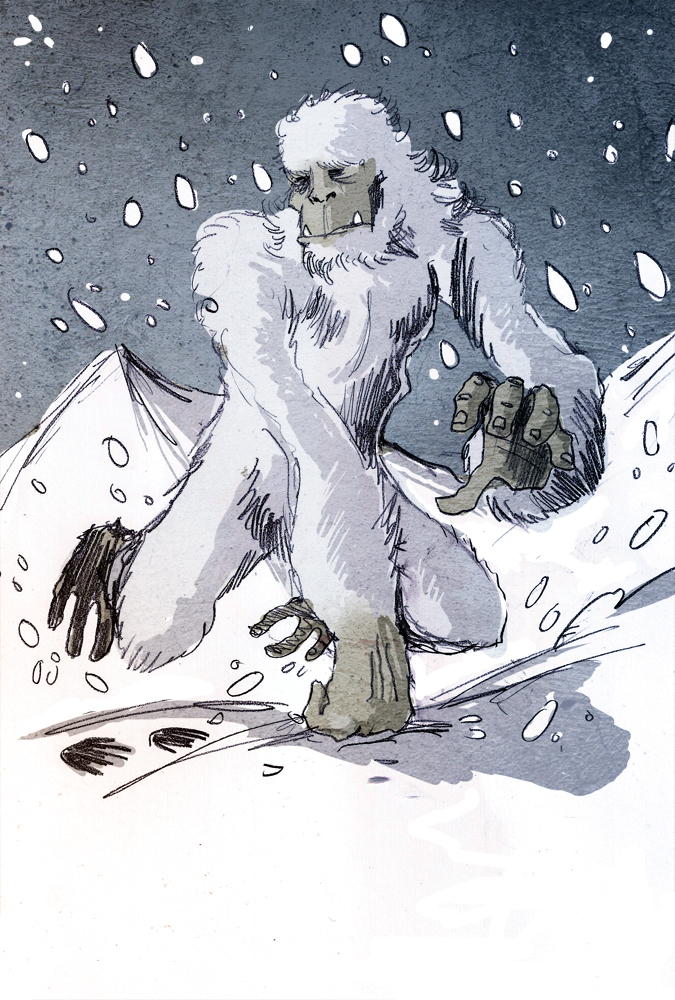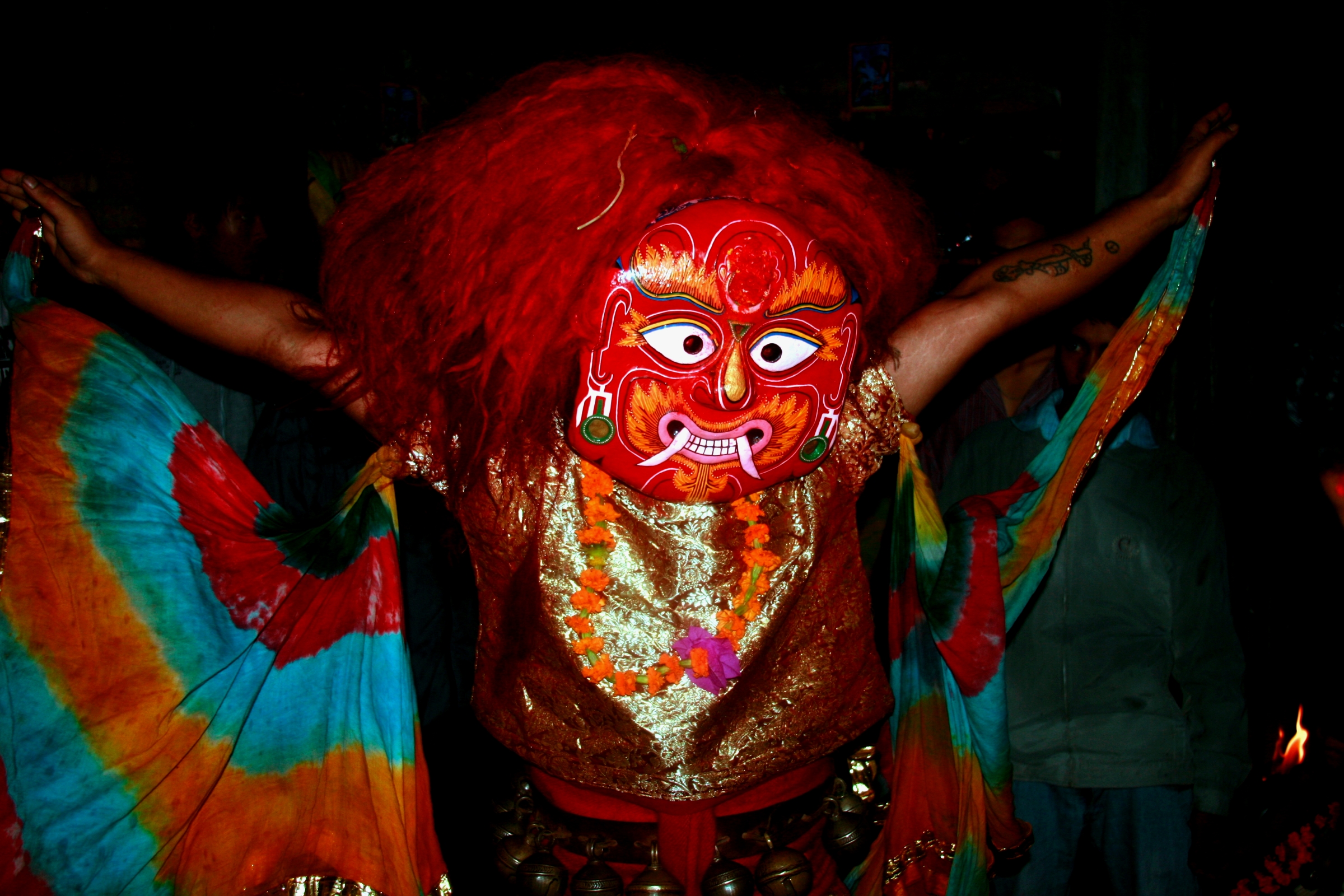|
Nepalese Folklore
Nepalese folklore is a diverse set of mythology and traditional beliefs held by the Nepali people. Folk beliefs * Banjhakri and Banjhakrini, supernatural shamans of the forest. * ''Bir'', a demon *''Boksi'', a witch * Budhahang, legendary Kirati king who could stop movement of sun * ''Chhauda'', a child ghost * Kichkandi, type a female ghost. * Lakhey and Majipa Lakhey, types of demon. * ''Masan'', a demon *''Murkatta'', a headless ghost with eyes and mouth in chest * Yeti, an ape-like creature purported to inhabit the mountains of Nepal. See also * Culture of Nepal The culture of Nepal encompasses the various cultures belonging to the 125 distinct ethnic groups present in Nepal. The culture of Nepal is expressed through music and dance; art and craft; folklore; languages and literature; philosophy and re ... References {{Nepal-stub Nepalese folklore Nepalese culture ... [...More Info...] [...Related Items...] OR: [Wikipedia] [Google] [Baidu] |
Yeti By Philippe Semeria
The Yeti ()"Yeti" ''''. is an ape-like creature purported to inhabit the in . In western popular culture, the creature is commonly referred to as the Abominable Snowman. Many dubious articles have been offered in an attempt to prove the existence of the Yeti, includi ... [...More Info...] [...Related Items...] OR: [Wikipedia] [Google] [Baidu] |
Nepali People
Nepalis ( English: Nepalese ; ne, नेपाली) are the citizens of Nepal under the provisions of Nepali nationality law. The country is home to people of many different national origins who are the descendants of immigrants from India, Kashmir, Central Asia, and Tibet. The term Nepalis (Nepalese) usually refers to the ''nationality'', that is, to people with citizenship of Nepal, while the people without Nepalese citizenship but with roots in Nepal such as Nepalese Americans are strictly referred to as ''Nepali Speaking Foreigners'' ( ne, नेपाली भाषी विदेशी) who are speakers of Bhojpuri, Maithili, Nepali or any of the other 128 Nepalese languages but are now foreign citizens or of foreign nationality bearing passports and citizenship of the foreign nation. It is also not generally used to refer to non-citizen residents, dual citizens, and expatriates. Nepal is a multicultural and multi-ethnic country with a majority of Hindus (inclu ... [...More Info...] [...Related Items...] OR: [Wikipedia] [Google] [Baidu] |
Banjhakri And Banjhakrini
Banjhākri and Banjhākrini are shamanic deities in the tradition of the Kirati people of Nepal , Sikkim Darjeeling , Kalimpong of India They are a couple, and possibly different aspects of the same being. They are supernatural shamans of the forest. In the Nepali language, ''ban'' means "wilderness", ''jhākri'' means "shaman", and ''jhākrini'' means "shamaness". Banjhākrini is also known as Lemlemey. Banjhākri is a short, wild, simian trickster who is a descendant of the Sun. His ears are large and his feet point backward. Long, matted hair covers his entire body, except for his face and palms, and he plays a golden dhyāngro. The dhyangro is the frame drum played by Nepali jhākri. Banjhākri finds human children who have the potential to be great shamans, and takes them back to his cave for training. There, the children are in danger of being eaten whole by Banjhākrini. Banjhākrini is both ursine and humanoid, with long hair on her head, long, pendulous b ... [...More Info...] [...Related Items...] OR: [Wikipedia] [Google] [Baidu] |
Shaman
Shamanism is a religious practice that involves a practitioner (shaman) interacting with what they believe to be a Spirit world (Spiritualism), spirit world through Altered state of consciousness, altered states of consciousness, such as trance. The goal of this is usually to direct Non-physical entity, spirits or Energy (esotericism), spiritual energies into the physical world for the purpose of healing, divination, or to aid human beings in some other way. Beliefs and practices categorized as "shamanic" have attracted the interest of scholars from a variety of disciplines, including anthropologists, archeologists, historians, religious studies scholars, philosophers and psychologists. Hundreds of books and Academic publishing#Scholarly paper, academic papers on the subject have been produced, with a peer-reviewed academic journal being devoted to the study of shamanism. In the 20th century, non-Indigenous Peoples, Indigenous Westerners involved in countercultural movements, ... [...More Info...] [...Related Items...] OR: [Wikipedia] [Google] [Baidu] |
Boksi
A boksi (Nepali: बोक्सी) is a person who has knowledge of witchcraft, ''Tuna Muna'' and Tantra. According to Tantra-shastra and Shivapurana, a boksi or boksa is a woman/ man who is different from normal gods or goddesses and has their own language. Boksi has a divine power and is capable to heal various diseases. A Boksi is capable to differentiate god, goddess, ghosts, ''pret'', ''pichas'' or ''dakini''. They are able to call any of the goddess or witches and ask them to do a job for them. According to mythology, Parvati, the wife of Shiva was the originator of boksi knowledge. She gave this power to seven of her sisters. From the youngest sister, this knowledge is believed to be transferred to the humans. Mostly elderly, unmarried or widowed women are the most likely to have been accused of being a boksi. In contemporary culture *''Boksi'' - a Nepali book on child psychology written by Balkrishna Sama. * ''Boksi Ko Ghar'' (Translation: House of Boksi) - a social dra ... [...More Info...] [...Related Items...] OR: [Wikipedia] [Google] [Baidu] |
Budhahang
Budhahang (Nepali:बुढाहाङ) was a Kirat Rai king of Khalsa territory of Eastern Nepal. His palace was located in the region currently known as Ankhisalla and Chintang. It is said that the Khalsa area of Dhankuta District included Chhintang, Khoku, Ankhisalla, Chungmang Pakhribas, Phalate, Sanne, Muga, Leguwa, Belhara and Bhirgaon were under the Khalsa state before the Unification of Nepal. www.nepalnewscenter.com Biography The identity of the king is contradictory. The parents of Budhahang are also not clear. According to Kājimān Kandaṅvā (1993: 121), the name of Budhahang's father was Rakhansingh hang. Budahang was the second siblings among four brothers - Cinbassa, Rakhanbassa, Rumbassa, Rukumbassa (in order of seniority). Budhahang had several children, the actual numbers are however unclear. It is agreed that he had seven daughters namely * Sureksi * Rakaksi * Tigumhaŋma or Chintang Devi, * Jagadeo * Sɨŋciri * Luŋciri * Piccadaŋma Budhahan ... [...More Info...] [...Related Items...] OR: [Wikipedia] [Google] [Baidu] |
Kirat
The Kirati people, also spelled as Kirant or Kiranti, are a Sino-Tibetan ethnic group. They are peoples of the Himalayas, mostly the Eastern Himalaya extending eastward from Nepal to North East India (predominantly in the Indian state of Sikkim and the northern hilly regions of West Bengal, that is, Darjeeling and Kalimpong districts). Etymology Kirat means lion-hearted people or people of a lion nature. It also means mountain people.The word Kirata is a derivation from Kirati or Kiranti to name the group of people in Eastern Nepal and Northeast India. History The Kirat ("Kiranti") are an ancient people who have been associated with the history of Nepal for thousands of years. Sources from the Kathmandu Valley describe the Kiratas as early rulers there whom may have been cattle-herding tribes. During the Kirat Dynasty Kathmandu was called Yela-khom. According to one of the legendary accounts, the primitive kiratis living in Nepal also lived in Sikkim. They are de ... [...More Info...] [...Related Items...] OR: [Wikipedia] [Google] [Baidu] |
Kichkandi
In Nepalese folklore or mythology, kichkanya () also referred as Kichkandi () is a spirit of a woman that is latched to an uncremated part of her dead body, usually a bone. They are generally known to be solitary spirits that haunt a particular location. Children often grow up hearing the stories of such tortured souls of women who wander the site of their untimely death. These women while alive were treated unfairly in some manner or died during childbirth or pregnancy. According to sightings, they are supposed to have unusually long black hair, pale and bony complexion and dressed up in a red bridal dress. It is said that they can be identified by looking at their feet, which face backward. People usually describe them as an alluring and young female, who lures a lonely male traveler and saps their life force. The victims are said to turn out drained of their life and skinny. According to other tales told by locals and cab drivers, these spirits are also known to hitchhike lat ... [...More Info...] [...Related Items...] OR: [Wikipedia] [Google] [Baidu] |
Lakhey
Lākhey (Nepal Bhasa: लाखे or , lā-khé) (alternative spellings Lākhe, Lākhay, ) is the dance of a demon in the carnival of God. Durbar Square, a historic plaza in Kathmandu, Nepal, facing ancient palaces and adorned by Hindu temples, is always full of eager crowds on the last day of Indra Jatra, the festival celebrating Indra, the Hindu king of heaven. On this divine stage, Lakhe the demon dances among gods and deities relentlessly and carelessly. He is depicted with a ferocious face, protruding fangs, and a mane of red or black hair. Lakhes figure prominently in the traditional Newar culture of Nepal Mandala. The Lakhe tradition is found in the Kathmandu Valley and other Newar settlements throughout Nepal. Lakhes are said to be demons who used to live in the forests and later became protectors to the townspeople. A female Lakhe is known as Lasin (). The other common legendary being in Nepalese folklore is the Khyāh, who is depicted as a fat, hairy ape-l ... [...More Info...] [...Related Items...] OR: [Wikipedia] [Google] [Baidu] |
Majipa Lakhey
Majipa Lakhey (Newar language, Nepal Bhasa: मजिपा लाखे, ) is a special lakhey in Nepalese folklore. He is also known as the Peaceful Bhairava (शान्त भैरव). The dance of this Lakhey takes place only in the week of the full moon of the month of Yenlaa of the Nepal Sambat calendar. He is considered to be the protector of the children. Etymology The Newari word ''Majipa'' is derived from Sanskrit "Manjupattan" "Manjusri city". Lākhe is the term used to denote carnivorous demons. Majipa Lakhey literally means the "carnivorous demon of Majipa". Mythology According to stories passed down through generations, majipa lakhey is supposed to have fallen in love with a girl from Majipa. So, the demon takes a form of a human and enters the city to see his beloved. Upon knowing the fact that the person is a Lakhey, the people capture the lakhey and present him to the king. The king makes a proposal to the demon that he will grant him a place in the city ... [...More Info...] [...Related Items...] OR: [Wikipedia] [Google] [Baidu] |
Murkatta
Murkatta () is a headless ghost with eyes and mouth in chest and carrying its head tucked under its arm. Murkatta is mentioned in various Nepali culture and traditions. They are considered as the spirits from the dead. The Murkatta is also interpreted as a person whose head has been cut down, symbolizing the defeat or a loss of intellect. In contemporary culture and religion The concept of Murkatta has inspired various works in contemporary culture, arts and literature. Some are listed below. * In Kathmandu, Nepal, a festival is celebrated on the day of Ghode Jatra to scare away the ''Murkatta'' and prevent its evil eyes from the children. * In Varanasi, India, a fifth century headless sculpture of the Buddha is worshipped as ''Murkatta Baba''. * The Sisne mountain(Nepali:सिस्ने हिमाल) in Rukum district is nicknamed as ''Murkatta'' in local language. * ''Murkatta Lass'' is a Nepali book by Dirgabahu. See also *Nepalese folklore Nepalese folklor ... [...More Info...] [...Related Items...] OR: [Wikipedia] [Google] [Baidu] |
Yeti
The Yeti ()"Yeti" ''''. is an ape-like creature purported to inhabit the in . In western popular culture, the creature is commonly referred to as the Abominable Snowman. Many dubious articles have been offered in an attempt to prove the existence of the Yeti, includi ... [...More Info...] [...Related Items...] OR: [Wikipedia] [Google] [Baidu] |


.jpg)

